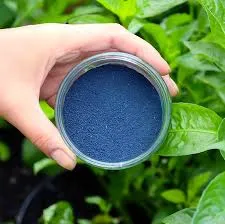high quality indigo fabric dyeing
The Art of High-Quality Indigo Fabric Dyeing
Indigo dyeing is a time-honored craft that has captivated artisans and fashion enthusiasts alike for centuries. Renowned for its deep blue hues and versatility, indigo is derived from the leaves of the Indigofera plant. The process of dyeing fabric with indigo is both intricate and rewarding, and when done correctly, it produces stunning, vibrant textiles that stand the test of time. This article delves into the journey of high-quality indigo fabric dyeing, exploring its history, techniques, cultural significance, and sustainable practices.
A Brief History
The tradition of indigo dyeing dates back over 5,000 years and spans various cultures across the globe, from ancient China to the vibrant textile markets of West Africa and the traditional dye pits of Japan. The allure of indigo lies not only in its rich color but also in its cultural heritage. In many societies, indigo has been used for ceremonial purposes and as a symbol of wealth and power. The transition from natural to synthetic dyes in the 19th century marked a turning point in dyeing practices; however, many artisans continue to valorize the use of traditional methods to achieve high-quality results.
The Indigo Dyeing Process
The process of indigo dyeing can be broken down into several distinct steps, each requiring skill, patience, and a keen eye for detail
.1. Preparation of the Fabric Before dyeing, the fabric must be properly prepared. Cottons and silks are the most common materials used, often pre-washed to remove impurities and ensure an even dye uptake.
2. Creating the Dye Bath The indigo dye is created through fermentation. The leaves of the Indigofera plant are harvested and then fermented in a solution with water and alkaline substances like lye or wood ash. This fermentation process is crucial, as it reduces indigo from its insoluble form to a soluble state, allowing it to bond with the fabric.
high quality indigo fabric dyeing

3. Dyeing Technique The fabric is then submerged in the dye bath. The exciting part of indigo dyeing is its characteristic oxidation process. When fabric comes out of the dye bath, it appears green, only to turn blue as it comes into contact with air. This unique property allows for a variety of techniques, including shibori (resist dyeing), where the fabric is bound or stitched to create intricate patterns.
4. Post-Dye Treatment After achieving the desired shade, the dyed fabric is washed and often treated to enhance its softness and colorfastness. This may include rinsing in vinegar or saltwater solutions.
Cultural Significance
Indigo has a profound cultural significance in many societies. In Japan, the traditional art of 'kasuri' involves intricate weaving and dyeing techniques that have been passed down through generations. In India, indigo dyeing is tied to the local economy and identity, with artisans in regions like Rajasthan creating stunning patterns and textiles that are highly valued both domestically and internationally.
Furthermore, modern fashion designers are increasingly drawn to indigo for its timeless appeal and the story behind it. The push for sustainable fashion has revived interest in natural dyes, as consumers seek eco-friendly alternatives to synthetic dyes known for their harmful environmental impact.
Sustainable Practices in Indigo Dyeing
As global awareness of environmental issues grows, sustainable practices in indigo dyeing are gaining traction. Many artisans are returning to traditional methods that prioritize ecological balance, and there is a renewed emphasis on sourcing indigo plants organically. Techniques such as natural fermentation reduce water usage and eliminate harmful chemicals from the dyeing process, promoting a healthier ecosystem.
In conclusion, high-quality indigo fabric dyeing is a blend of artistry, history, and sustainability. This intricate craft not only produces beautiful textiles but also connects us to heritage and environmental responsibility. As the world continues to evolve, the legacy of indigo dyeing remains robust, inviting new generations to appreciate the artistry and respect the environment in the process.
-
The Timeless Art of Denim Indigo Dye
NewsJul.01,2025
-
The Rise of Sulfur Dyed Denim
NewsJul.01,2025
-
The Rich Revival of the Best Indigo Dye
NewsJul.01,2025
-
The Enduring Strength of Sulphur Black
NewsJul.01,2025
-
The Ancient Art of Chinese Indigo Dye
NewsJul.01,2025
-
Industry Power of Indigo
NewsJul.01,2025
-
Black Sulfur is Leading the Next Wave
NewsJul.01,2025

Sulphur Black
1.Name: sulphur black; Sulfur Black; Sulphur Black 1;
2.Structure formula:
3.Molecule formula: C6H4N2O5
4.CAS No.: 1326-82-5
5.HS code: 32041911
6.Product specification:Appearance:black phosphorus flakes; black liquid

Bromo Indigo; Vat Bromo-Indigo; C.I.Vat Blue 5
1.Name: Bromo indigo; Vat bromo-indigo; C.I.Vat blue 5;
2.Structure formula:
3.Molecule formula: C16H6Br4N2O2
4.CAS No.: 2475-31-2
5.HS code: 3204151000 6.Major usage and instruction: Be mainly used to dye cotton fabrics.

Indigo Blue Vat Blue
1.Name: indigo blue,vat blue 1,
2.Structure formula:
3.Molecule formula: C16H10N2O2
4.. CAS No.: 482-89-3
5.Molecule weight: 262.62
6.HS code: 3204151000
7.Major usage and instruction: Be mainly used to dye cotton fabrics.

